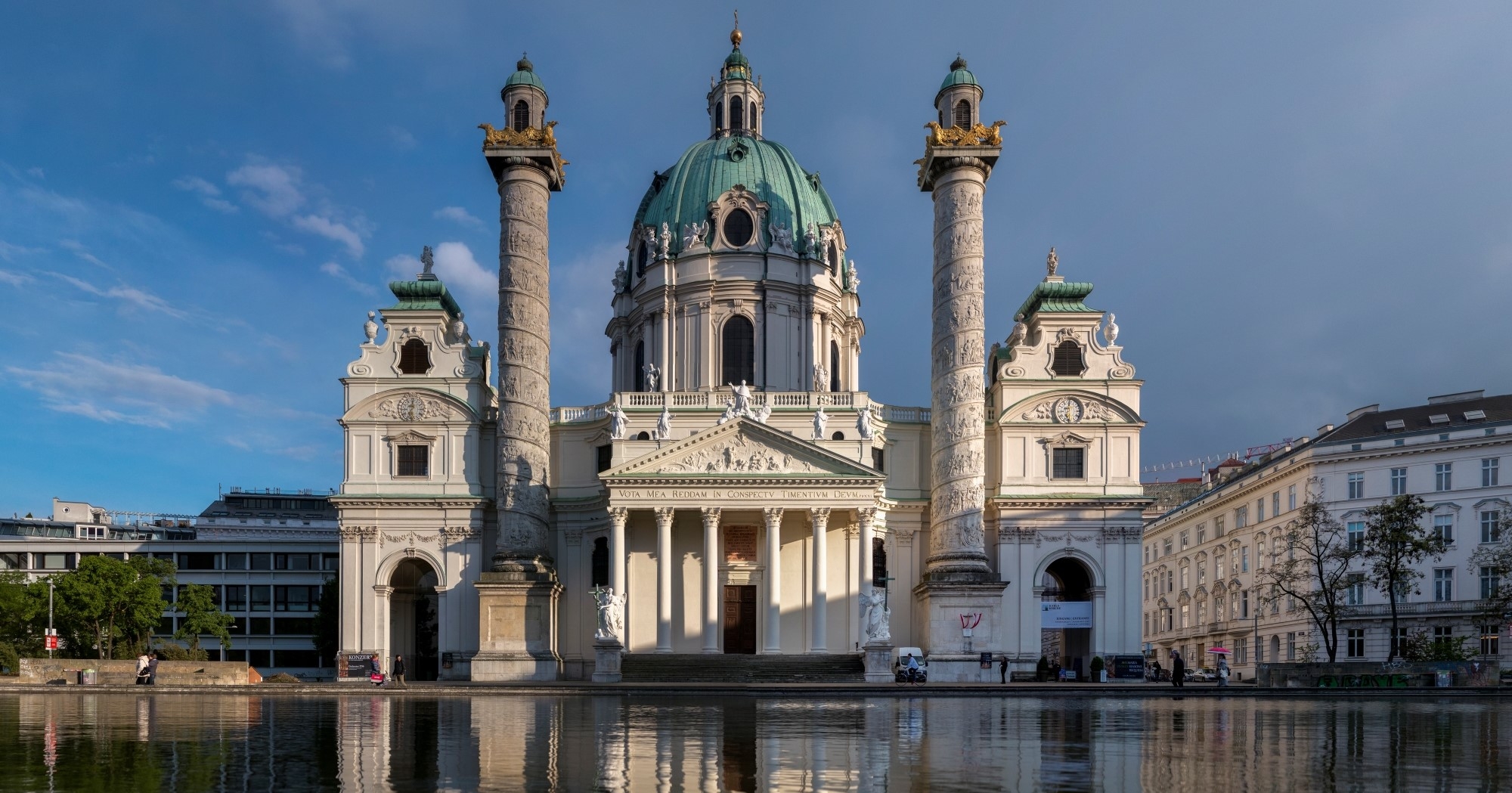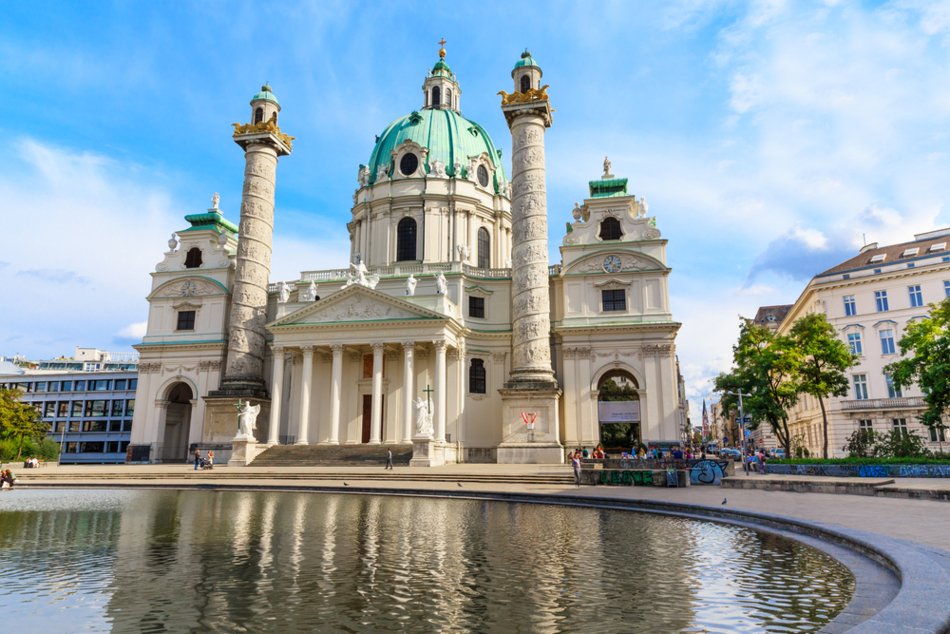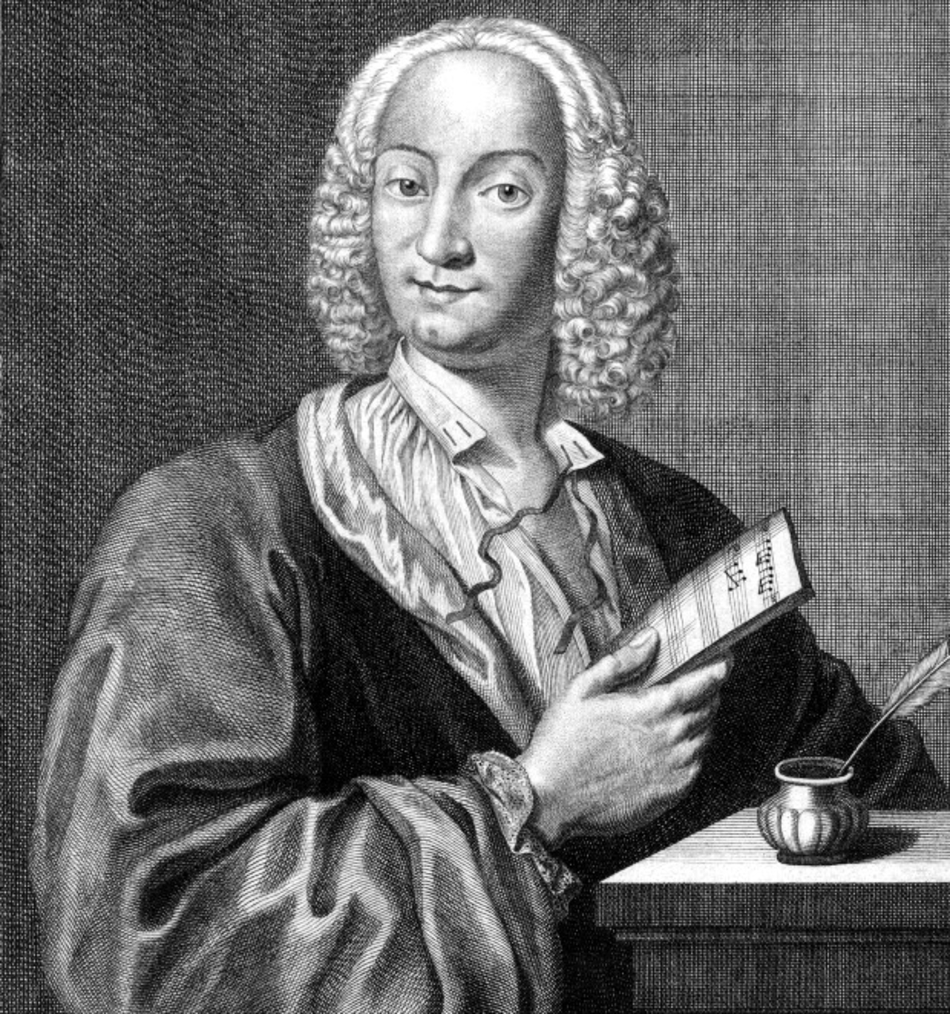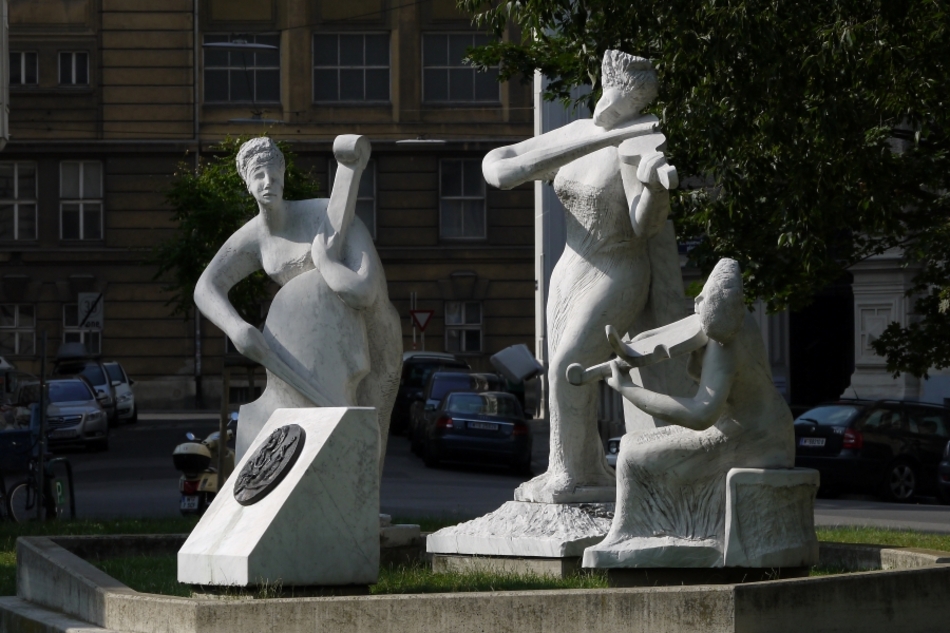
Vienna's Karlskirche: Experiencing Vivaldi's Four Seasons
Vivaldi's Four Seasons is undoubtedly one of the most beautiful and ecstasy-inducing pieces of music ever composed. Imaginative and superbly refined, each arrangement truly captures the mood that each of the four seasons evokes.
There is no better way to experience this beautiful music than with a glorious live rendition at one of Europe’s greatest cathedrals: the Karlskirche (St. Charles Church) in Vienna, Austria. Located in Karlsplatz in the Austrian capital, it is one of the most dazzling Baroque-style churches in Austria, completed in 1737 and dedicated to Saint Charles Borromeo. With Christian artwork layered all across the walls and ceiling, its holy aura will make even the most hardened atheist blush under a holy warmth emanating from all over.

History of the Four Seasons
Antonio Vivaldi was an Italian composer and violin extraordinaire. Born in Venice in 1678, his father, an already accomplished violinist, taught his son to play and would take the aspiring genius with him to concerts around Venice, exposing him to all the magic of the music scene in the arts capital of Europe at the time. He was later taught music composition by the acclaimed Italian composer Giovanni Legrenzi, further developing his skills, and produced operas such as Tito Manlino (1719), La Silvia (1721) and the concertos Il Cimento dell′ Armonia e dell′ Inventione (1725).

The Four Seasons is Vivaldi's most famous work. First published in 1725, this composition consists of four concertos, each representing the four seasons: Spring, Summer, Autumn and Winter. From the exuberant new life of spring, to the joy of Summer, the simmering and soothing calm period of Autumn and the tranquil and blissful ending of winter, each piece perfectly captures these dramatic scenes.
Though he was a much sought-after composer and musician in many of the grand European courts at the time, in his later years Vivaldi struggled financially as was the case with many composers of his time. Vivaldi found his music in Vienna becoming outdated due to fresh talent, which was most likely one of the reasons he left his homeland of Venice for Vienna. Unfortunately, his stay was short-lived, as in 1741 at the age of 63 he died of an internal infection and was buried next to the Karlskirche.

Harmonia Ensemble Wien
It's no wonder that the Church regularly hosts performances of many of Vivaldi’s works. Recently, it was performed by the wonderful Harmonia Ensemble Wien. The rendition consisted of a concert for solo violin with string quartet and basso continuo B minor RV 580. The solo violinist brought much-desired enthusiasm as he danced, swayed and stomped his way gleefully and whimsically through the whole performance, fully enveloping the crowd.
Every performer, from the string quartet to the bass section, filled the large church with the blissful sounds of this near 30 hundred-year-old music. Botht the sombre moments and the audacious moments were brilliantly captured and harmonised, taking the audience on a spiritual journey through the blooming fields to the sun-lit valleys, to the dry leaves-covered meadows to the snow-covered hills. It was truly a magical event to experience.
While the group is set to perform its last set at the St Charles Church on September 28 and September 30, the venue holds regular performances of Vivaldi’s finest works.
If you're seeking more awe-inspiring expriences to enjoy, check out our pick of the best exhibitions in Paris.
Credits for the Main photo: Karlskirche Thomas Ledl, CC BY-SA 4.0 via Wikimedia Commons
